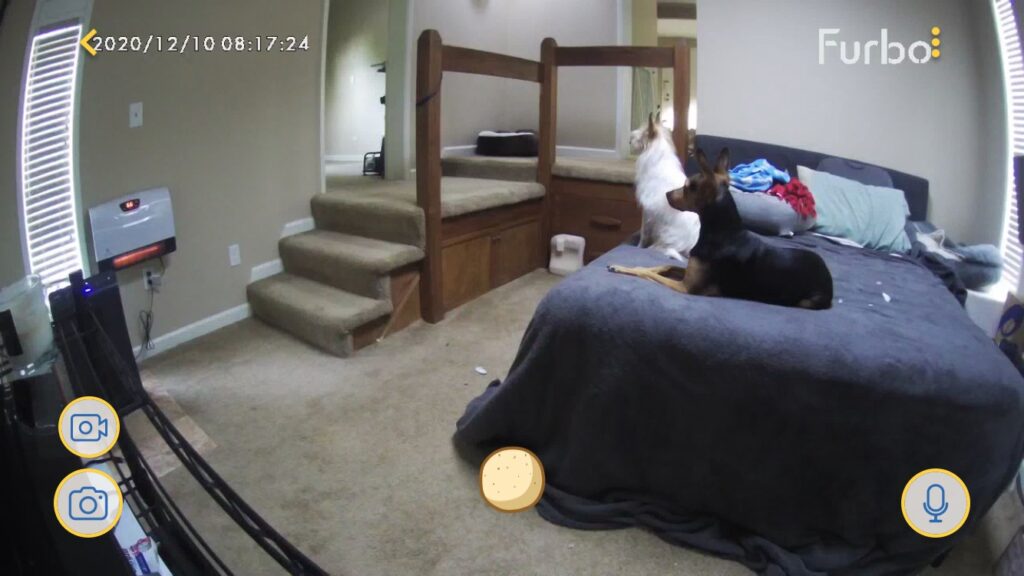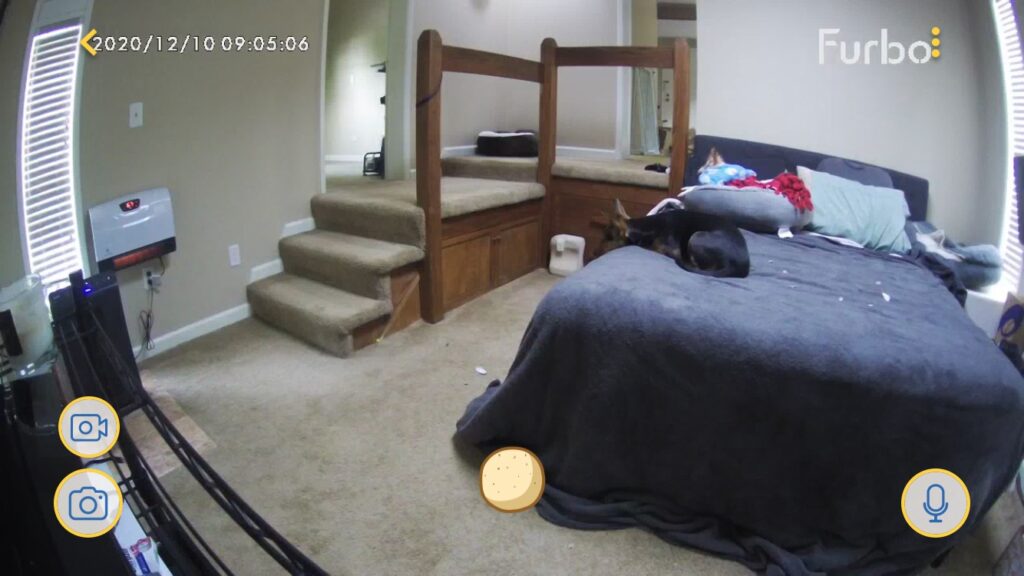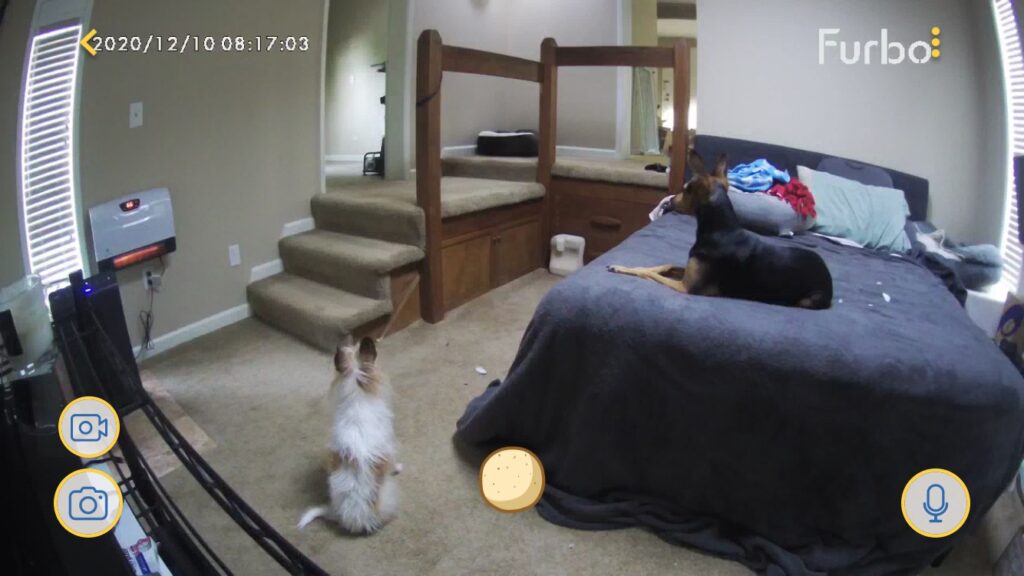We are full swing into our free Separation Anxiety Workshop this week! In honor of that workshop and our Separation Anxiety Immersive Digital Course which starts this upcoming Sunday 1/10/21, I wanted to do a separation anxiety-related training challenge this month. Here it is:
Video your pet home alone
Here are a few screenshots from one of our consultants, Ellen, doing this activity:



Why everyone should do this
In Ellen’s blog post about her dog’s separation anxiety journey last month (check it out here if you haven’t read it yet), she mentioned that scientists are starting to think that more pets have separation-related issues than we previously thought– up to 22.3% – 55% of the dog population. That’s a whole lot of dogs! Even if you think your pet is fine being left alone, let’s double check just to make sure.
For those of you who do have a pet who you think may be displaying separation-related issues, this is definitely something you’ll want to do. The first thing we ask potential separation anxiety clients to do is send us a video of their pet home alone. With other behavior issues we’re able to ask questions about what the person sees their pet doing and we can determine what’s going on that way without needing to see the behavior (more info here). However, with separation-related issues the person can’t know what their pet is doing without a video. There can be other explanations for certain behaviors aside from separation-related distress, so a video is incredibly helpful in this situation.
Note: if it’s pretty obvious your pet is distressed being left home alone, work with a consultant before doing this. There’s no need to cause unnecessary stress and a professional can give you more specifics on the set-up than what’s feasible in a blog post.
How to do it
There are a lot of ways to get a video of your pet home alone. Here are a few of our favorites (Disclosure: Affiliate links ahead. We receive a small commission for purchases made through these links at no extra cost to you. This helps us continue to put out free content to help you and your pets live more harmoniously!):
- Zoom yourself. Set up a zoom meeting between two accounts (both of which can be owned by you!). One camera stays in the house (laptops work great here) and the other goes with you (i.e. phone or tablet). I love this option because you get real-time streaming + recording function that you can send to your behavior consultant.
- Ring or Nest systems. A lot of folks already have home security systems set up in their house that can be accessed in real-time and can save recordings. If you already have something like this, use it!
- Furbo cameras. Furbos are designed specifically for knowing what your dog is up to while you’re gone. A super cool feature is their event-triggered recording option (available through an optional subscription with the device) so you can better learn what triggers a reactive dog throughout the day.
What you’re looking for
Long-time readers of this blog won’t be surprised at the first answer: body language. We’re looking for stress signals before and after leaving. Everyone– pets included– shows stress a little differently so the specific signals will be dependent on the individual. Common signals include vocalizing, pacing, drooling, and destruction. However, shutting down is a not uncommon signal that can also be difficult to distinguish from true rest and relaxation.
We’re also looking for how long it takes them to calm down if we do see stress signals. Some pets’ anxiety is more centered around the actual departure than being alone for a long time. A video makes all of that clearer. Again, if it’s pretty obvious that your pet is distressed being left alone I recommend working with a consultant first so they can give you more specifics on the video set-up.
Now what?
- Figure out the technology you’d like to use to get a video of your pet home alone.
- Record your video. Since it’s hard to go places at the moment, a quick walk around the block can be a good start.
- Watch your video. What body language signals do you see? What activities do you see them performing?
- If you’re seeing signs of stress, we recommend starting on that behavior modification journey now before it becomes a real problem when we’re back to leaving our pets for longer. Our Separation Anxiety Immersive Digital Course or a private session are both great options. We recommend Ellen for separation-related problems– she’s finishing up a program to be a certified separation anxiety consultant! Email us at [email protected] to get started with either option.
Happy training!
Allie
